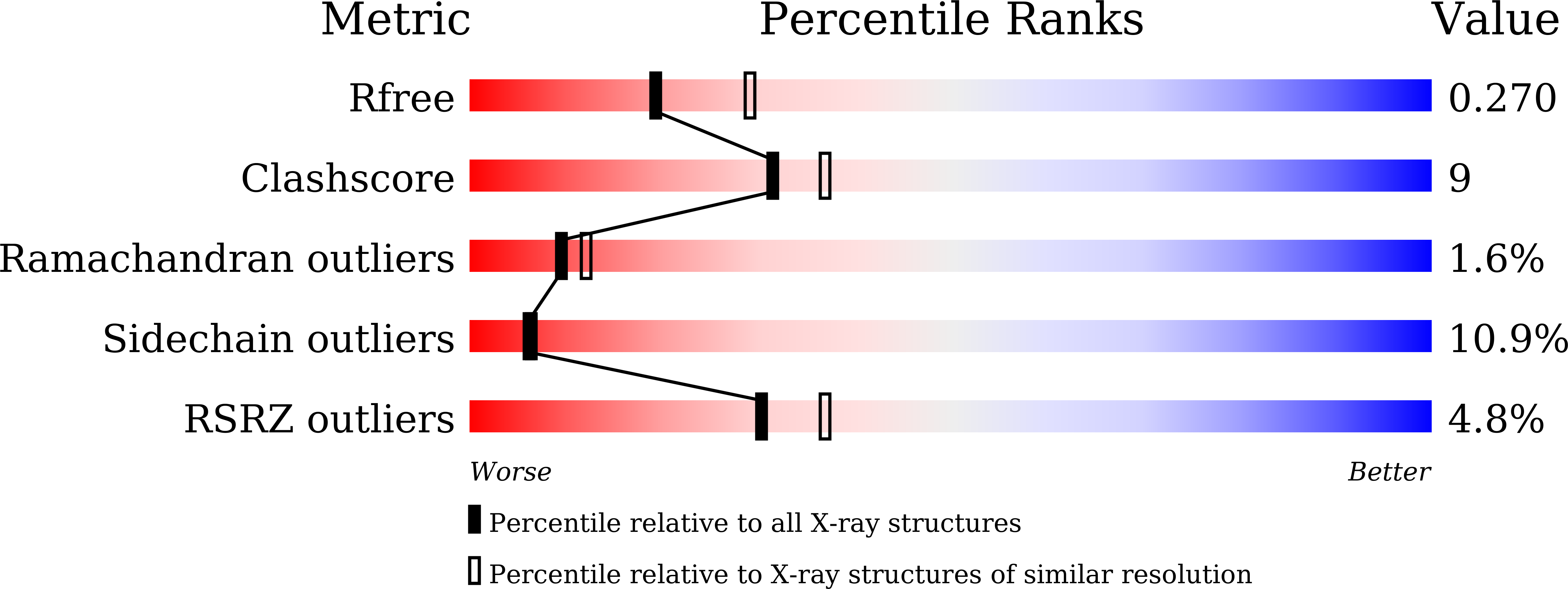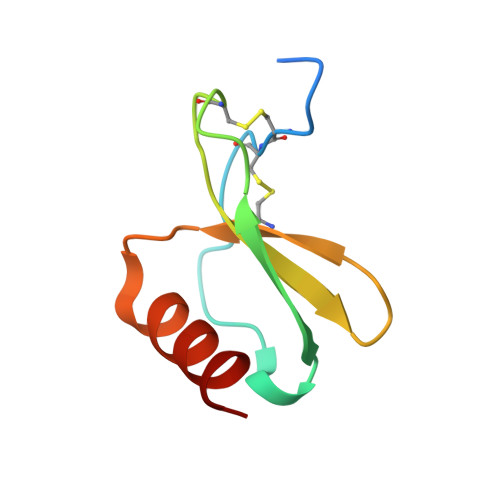N-terminal Backbone Pairing Shifts in CCL5- 12 AAA 14 Dimer Interface: Structural Significance of the FAY Sequence.
Li, J.Y., Chen, Y.C., Lee, Y.Z., Huang, C.H., Sue, S.C.(2020) Int J Mol Sci 21
- PubMed: 32121575
- DOI: https://doi.org/10.3390/ijms21051689
- Primary Citation of Related Structures:
6LOG - PubMed Abstract:
CC-type chemokine ligand 5 (CCL5) has been known to regulate immune responses by mediating the chemotaxis of leukocytes. Depending on the environment, CCL5 forms different orders of oligomers to interact with targets and create functional diversity. A recent CCL5 trimer structure revealed that the N-terminal conversed F12-A13-Y14 ( 12 FAY 14 ) sequence is involved in CCL5 aggregation. The CCL5- 12 AAA 14 mutant with two mutations had a deficiency in the formation of high-order oligomers. In the study, we clarify the respective roles of F12 and Y14 through NMR analysis and structural determination of the CCL5- 12 AAA 14 mutant where F12 is involved in the dimer assembly and Y14 is involved in aggregation. The CCL5- 12 AAA 14 structure contains a unique dimer packing. The backbone pairing shifts for one-residue in the N-terminal interface, when compared to the native CCL5 dimer. This difference creates a new structural orientation and leads to the conclusion that F12 confines the native CCL5 dimer configuration. Without F12 anchoring in the position, the interfacial backbone pairing is permitted to slide. Structural plasticity occurs in the N-terminal interaction. This is the first case to report this structural rearrangement through mutagenesis. The study provides a new idea for chemokine engineering and complements the understanding of CCL5 oligomerization and the role of the 12 FAY 14 sequence.
Organizational Affiliation:
Institute of Bioinformatics and Structural Biology, National Tsing Hua University, Hsinchu 30013, Taiwan.














